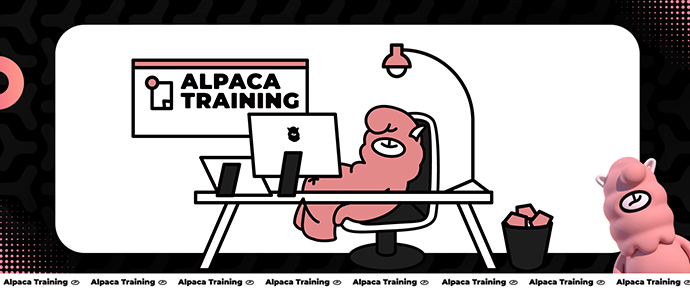2024年8月雅思考试纸笔共有5个场次,机考则每天都可参加考试。羊驼雅思整理了8月雅思考试阅读预测题目/题型以及答案(reading passage 3),供考生们复习参考。

2024年8月雅思考试预测题请查看2024年雅思机经:听力、阅读、写作回忆及答案汇总
READING PASSAGE 3
You should spend about 20 minutes on Questions 27-40 which are based on Reading Passage 3 below.
Children and Playing 儿童与玩耍
Paragraph A
Childhood is in every sense a preparation for adulthood, both in terms of physical and mental maturation. It is an essential stepping stone that allows all young people to adjust optimally to the requirements that collective expectations and rules set for any adult individual, to both integrate, exploit and enjoy living within society. By definition, individuals who fail to meet these criteria are classified as anti-social or in some way incapable of coping with societal expectations and therefore unlikely to experience a positive quality of life. Aspects of human brain maturation continue from birth until into the late teens. During this long developmental period, a child will learn from interactions with parents, siblings, relations, peers and teachers, and will have both positive and negative emotional experiences due to these and other life events. Not only is this a phase of intense adaptation and information gathering, but the process of maturation is organised so as to structure it progressively in the most effective way. Of course, a child is strongly influenced by being taught by other individuals, but each child also has at their disposal a highly effective, self-help tuition kit that is present for all children. This is play.
Paragraph B
Play is a fundamental behaviour of juveniles in all species of birds and mammals. While adults can also show it, although at a much-reduced frequency, they often give the impression that it is an attractive, but wasteful expression of leisure that only the young with minimal responsibilities can indulge in. In truth, it is this play of youth that prepares an individual in an important variety of ways for adulthood. While the building blocks for brain development are created before birth, the brain is only about 25 per cent complete at birth. The brain maturation process continues during the first two decades of life, although of course, brain networks can continue to adapt in the light of experience throughout the whole of an individual's life. The types of play that humans exhibit change during the various maturational stages of the brain.
Paragraph C
Between birth and year one, play during this period involves practice of the movement and sensory systems with interest in patterns, colours and sounds, exploring textures, grasping objects and performing simple actions with them. Play is highly repetitive, like a form of practice. Over the next two years or so, examples of pretend play are seen, indicating that individuals are capable of symbolic thought. The brain's specialised language production and comprehension regions develop, as language communication expands rapidly. Language is also played with in rhymes and songs and 'silly' sounds, and pretend characters can talk, express emotions and perform actions. Between ages three and eight, play becomes more elaborate and extensive. Children engage in complex theme play involving roles, scripts and costumes. By the age of six, games with rules become a pervasive play activity, as well as rule negotiations and discussion of "fairness". Both co-operation and competition occur in these games, as well as in spontaneously invented ones. Through this kind of play, children demonstrate extensive symbolic thought capacities and the ability to self-regulate and explain their own behaviour. From ages eight to fourteen, play becomes increasingly sophisticated and symbolic, with pretend themes often carrying on for months. Symbolic board and computer games are also popular. At this stage, many children will have been introduced to adult-controlled more organised games, such as sport, which require greater control of motor, social and cognitive processes.
Paragraph D
While young animals of most species show mainly relatively simple forms of play up to the age of puberty, it is notable that the species that tend to have the most complex life styles engage in play the most and with the most sophisticated repertoire. This naturally includes non-human primates and particularly the great apes, where quite complex forms of social and object play are seen. Dolphins are also notable in the range and complexity of the games they play. It has been claimed that captive bottle nosed dolphins can show 317 distinct forms of play behaviour. One of these is blowing bubbles and catching them in the mouth before they reach the surface. To add interest and competition, they can apparently make the task more and more difficult by releasing the bubbles closer and closer to the surface or modifying swimming style while the bubbles are released.
Paragraph E
Amongst mammals other than humans, it is the species that rely on their group hunting skills that show the greatest amount of play behaviour as juveniles. Hunting species also seem happy to play with objects, presumably because they represent practice for catching and manipulating prey. Apart from developing sensorimotor dexterity, these play interactions also help to sort out dominance relationships and promote social alliances and cohesion in the group, though not with outsiders to the group. Play for all species is a key adaptive tool for survival and therefore, like all-important behaviour, its expression is linked to brain dopamine reward systems.
Paragraph F
Play deprivation can have a significant effect in humans. Children who have been deprived of play are likely to have been neglected in many other ways. The effects can include an inability to make friends and socialise, leading to an isolated childhood and adolescence, which in turn can lead to a lonely and isolated adulthood, with individuals unable to understand their own or other's emotions. A childhood without adequate play experiences can lead to a lack of physical skills and abilities, which often leads to obesity and poor health, and a lack of confidence in one's own abilities.
Questions 27-34
The text on the previous pages has 6 paragraphs A-F.
Which paragraph contains the following information?
Write your answers in boxes 27-34 on your answer sheet.
27 The earliest forms of human play are often very repetitive.
28 Some animals consciously like making their play games more challenging.
29 A newborn baby's brain is only about a quarter developed.
30 Children will often start to engage in role-playing after the age of three.
31 Children who miss out on adequate play can experience emotional problems.
32 People who fail to adapt to social expectations of behavior can be seen as being anti-social.
33 The animals that have the most complex lives also have the more complex play routines.
34 Animals that hunt like to play with objects.
Questions 35-39
Choose the correct letter A, B, C or D.
Write the correct letter in boxes 35-39 on your answer sheet.
35. Children's interaction with parents is
A initially better experienced with both parents present.
B not always a positive experience.
C never to be avoided.
D always a positive experience.
36. Adults often display that
A play is a waste of time for them.
B play is still an everyday part of their lives.
C play is something to do with their children.
D play is something that should be done with increased frequency.
37. When children first start to play games with rules,
A they develop the ability to cheat.
B they develop the ability to plan ahead.
C they develop the ability to justify their actions.
D they develop the ability to choose teams.
38. Play routines for hunting animals do not help them
A develop the ability to chase prey.
B develop social relationships with animals outside their group.
C develop social relationships within their group.
D develop coordination.
39. Children deprived of play are liable to
A be entrepreneurs.
B have older siblings.
C be smaller.
D have often suffered some form of neglect.
Questions 40
Choose the correct letter A, B, C or D.
Write the correct letter in box 40 on your answer sheet.
40. What is the writer's purpose in Reading Passage 3?
A To explain the problems faced by children who do not experience enough play.
B To analyse the different types of play games experienced by humans and animals.
C To assess the role and importance of play in humans and animals.
D To discuss the role of the child psychiatrist in recommending different play games for children.
参考答案:
27. C 28. D 29. B 30. C
31. F 32. A 33. D 34. E
35. B 36. A 37. C 38. B
39. D 40. C




